Renaissance
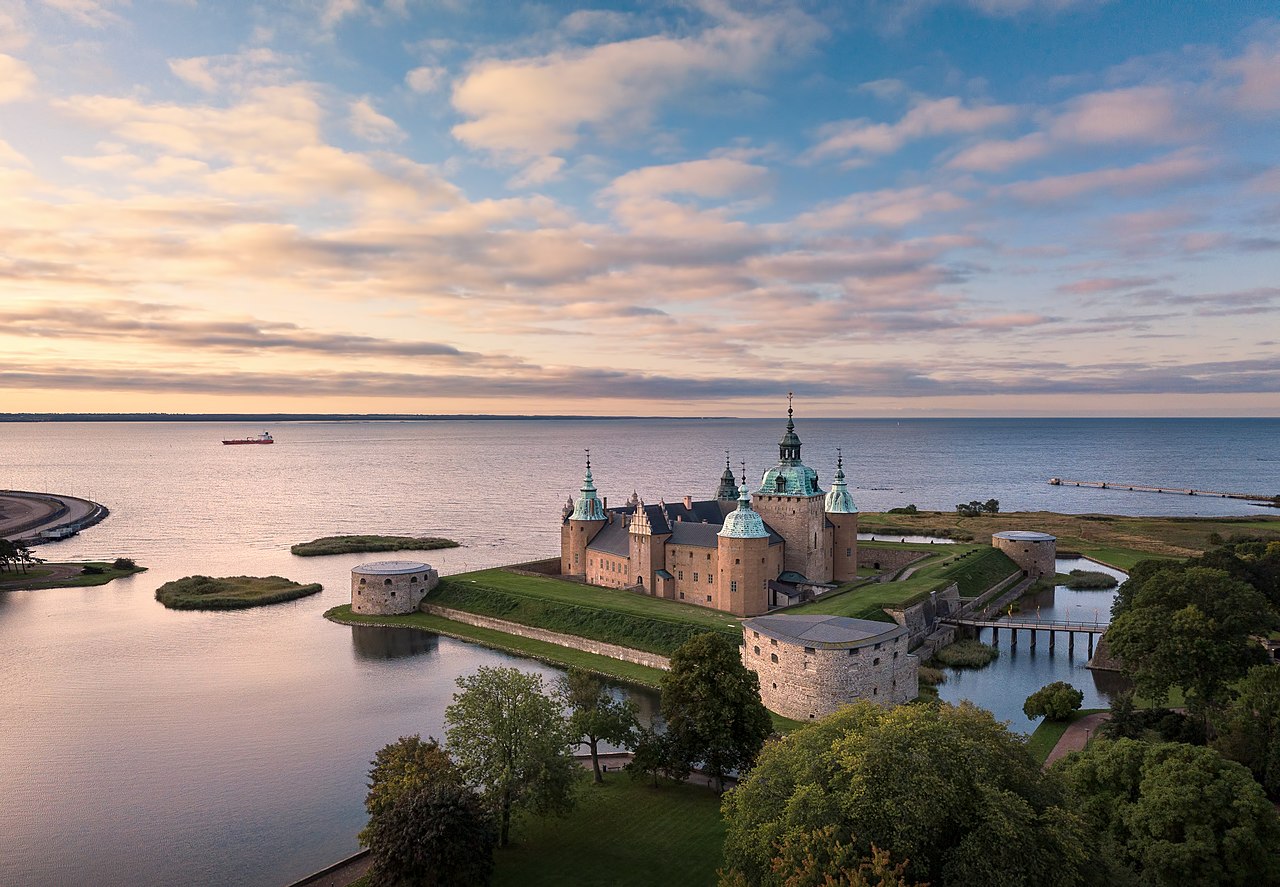
Photo: Kateryna Baiduzha, Wikimedia Commons
Renaissance architecture is the European architecture of the period between the early 15th and early 16th centuries in different regions, demonstrating a conscious revival and development of certain elements of ancient Greek and Roman thought and material culture. Renaissance style places emphasis on symmetry, proportion, geometry and the regularity of parts, as demonstrated in the architecture of classical antiquity and in particular ancient Roman architecture, of which many examples remained. Orderly arrangements of columns, pilasters and lintels, as well as the use of semicircular arches, hemispherical domes, niches and aediculae replaced the more complex proportional systems and irregular profiles of medieval buildings.
Examples of renaissance architecture: Kalmar slott (pictured), Vadstena slott, Gripsholms slott, Örebro slott, Ekenäs slott, Malmöhus
Baroque
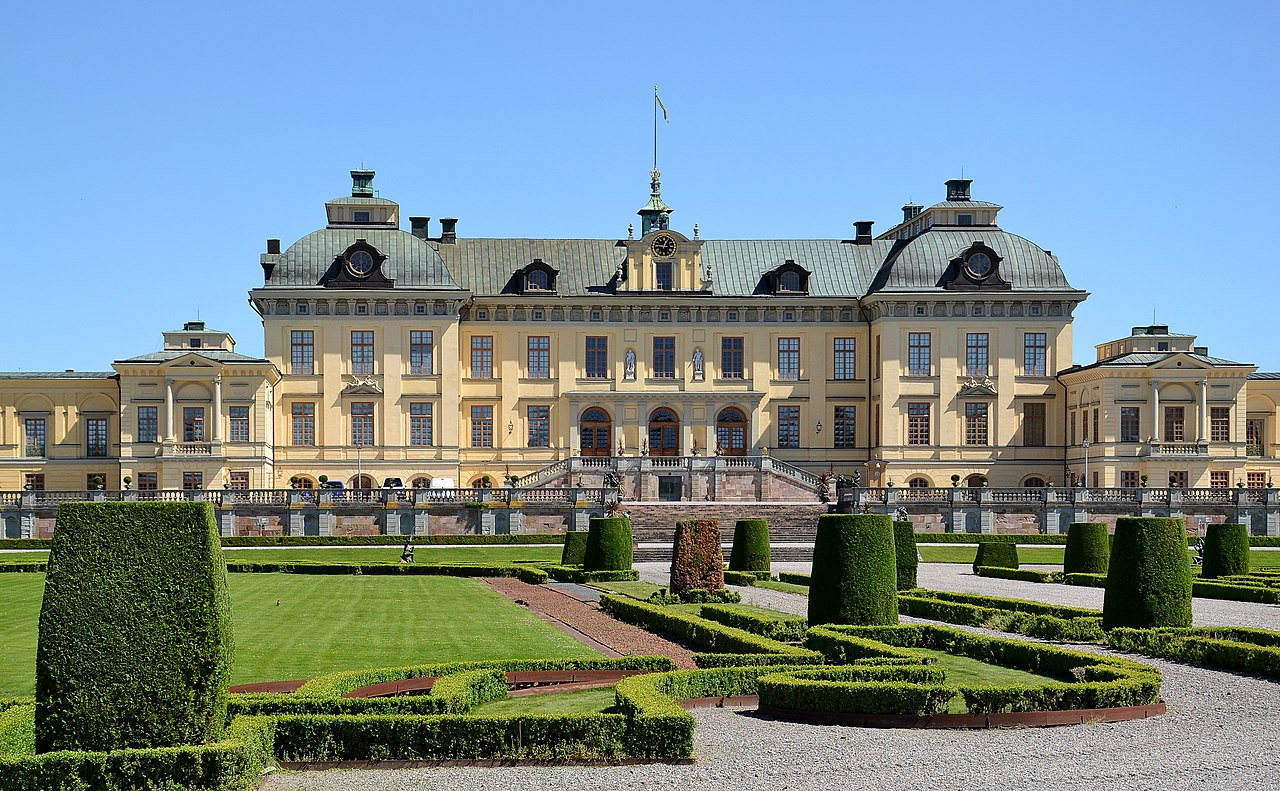
Photo: Pudelek, Wikimedia Commons
Baroque architecture is a highly decorative and theatrical style which appeared in Italy in the early 17th century and gradually spread across Europe. Baroque architects took the basic elements of Renaissance architecture, including domes and colonnades, and made them higher, grander, more decorated, and more dramatic. The interior effects were often achieved with the use of quadratura, or trompe-l’œil painting combined with sculpture; the eye is drawn upward, giving the illusion that one is looking into the heavens. Clusters of sculpted angels and painted figures crowd the ceiling. Light was also used for dramatic effect; it streamed down from Cupolas, and was reflected from an abundance of gilding. Twisted columns were also often used, to give an illusion of upwards motion, and cartouches and other decorative elements occupied every available space. In Baroque palaces, grand stairways became a central element.
Examples of baroque architecture: Drottningholm (pictured), Stockholms slott, Mariedals slott, Skokloster, Läckö, Jordberga, Sturefors, Steninge, Mälsåker, Sjö slott, Ekolsund, Strömsholm, Ericsberg
Rococo
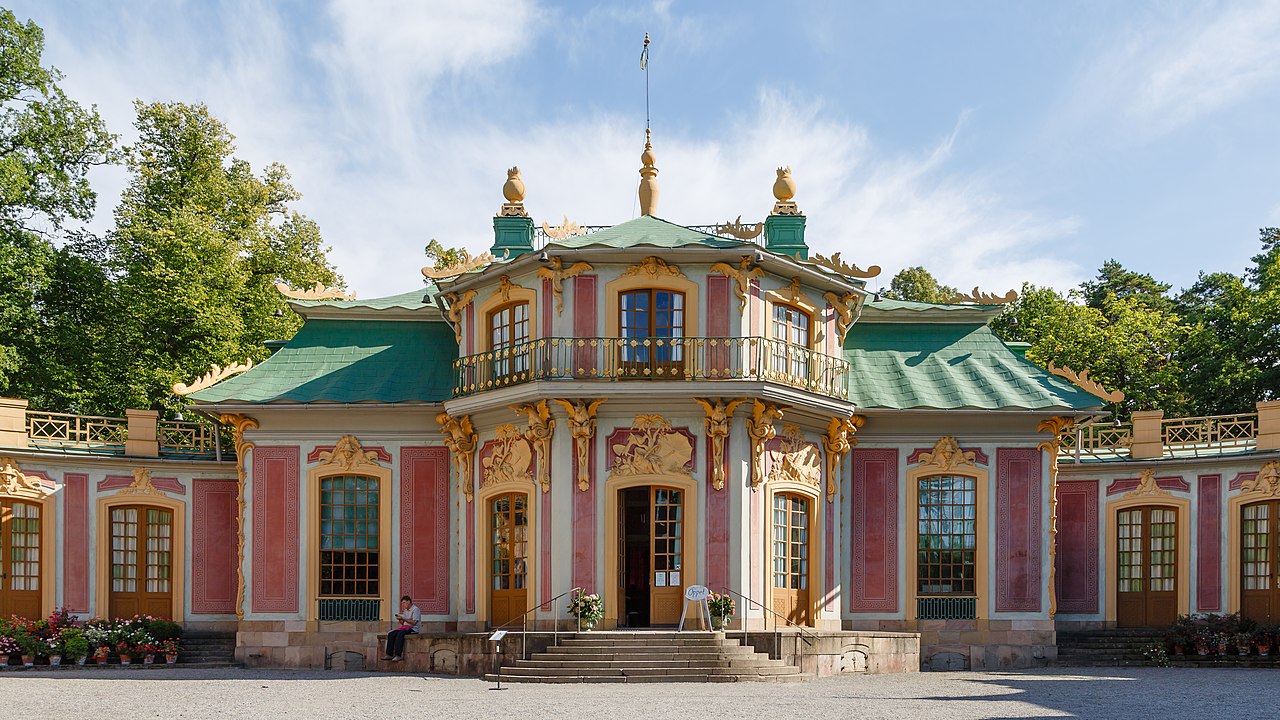
Photo: CEphoto, Uwe Aranas, Wikimedia Commons
Rococo is an exceptionally ornamental and dramatic style of architecture, art and decoration which combines asymmetry, scrolling curves, gilding, white and pastel colours, sculpted moulding, and trompe-l’œil frescoes to create surprise and the illusion of motion and drama. It is often described as the final expression of the Baroque movement. Rococo features exuberant decoration, with an abundance of curves, counter-curves, undulations and elements modeled on nature. The exteriors of Rococo buildings are often simple, while the interiors are entirely dominated by their ornament. The style was highly theatrical, designed to impress and awe at first sight.
Examples of rococo architecture: Kina slott (pictured), Stora Väsby slott, Tullesbo, Björnstorps slott, Österbybruk, Svartsjö, Åkerö slott, Svindersvik, Övedskloster, Tureholm, Myrö
Neo-classicism: Gustavian Style & Empire
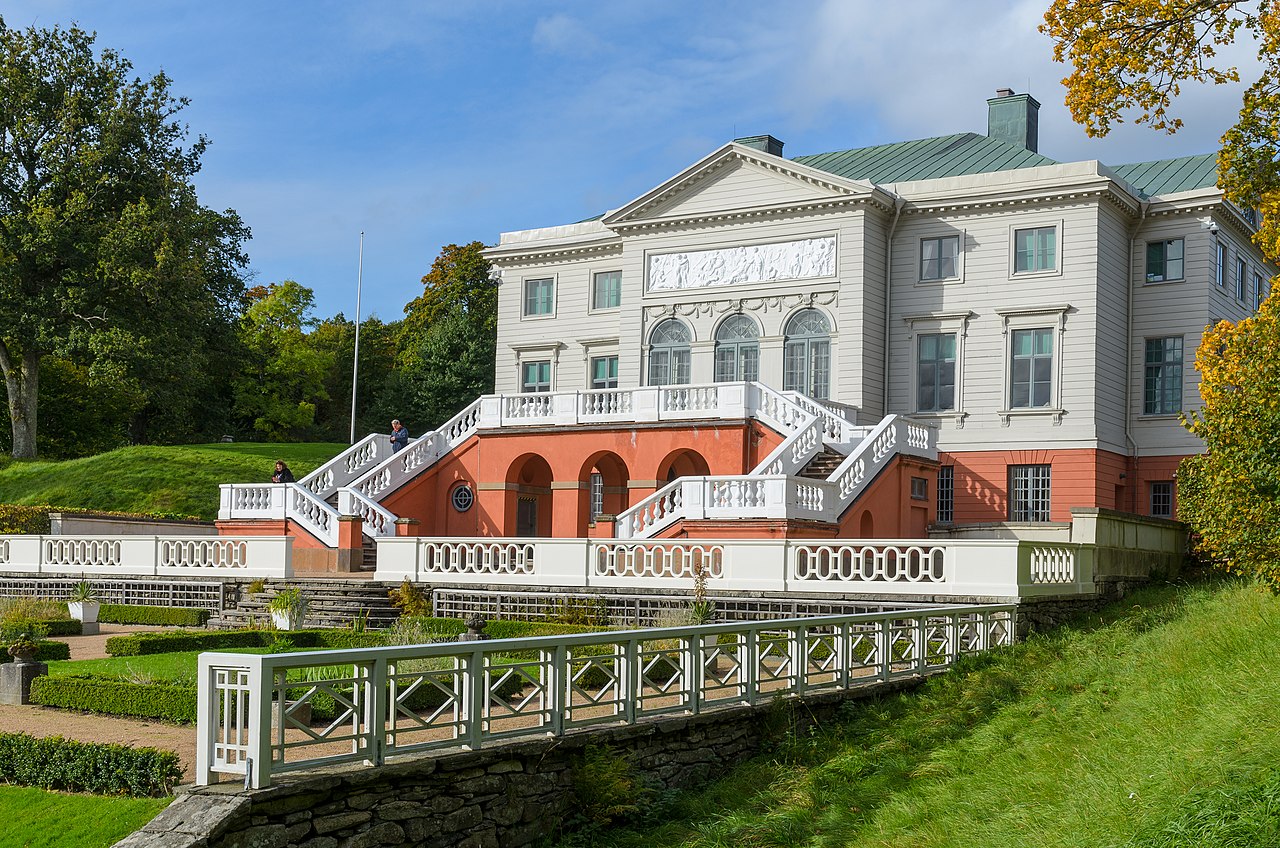
Photo: Arild Vågen, Wikimedia Commons
Neoclassical art was traditional and new, historical and modern, conservative and progressive all at the same time. It was inspired by Greco-Roman forms and ideals, and a reaction against the rococo style. Distinguishing features are the use of orders, pediments, entablature, friezes and classical decorative ornaments. The Swedish equivalent of neo-classicism is often called Gustavian style, named after King Gustav III. Empire, on the other hand, is a later version of neo-classicism. In Sweden, Empire is often called Karl Johan style, after King Karl Johan XIV. Empire can simply be described as a “simplification” of the earlier neo-classicist style.
Examples of neo-classicism: Skalltorps säteri, Gimo herrgård, Gustav III:s paviljong, Ljungs slott, Sturehov, Haga slott, Gunnebo (pictured), Rosendals slott, Elghammar, Skottorp
Historicism & Revivalism (Neo-Renaissance, Neo-Gothic, Neo-Baroque)
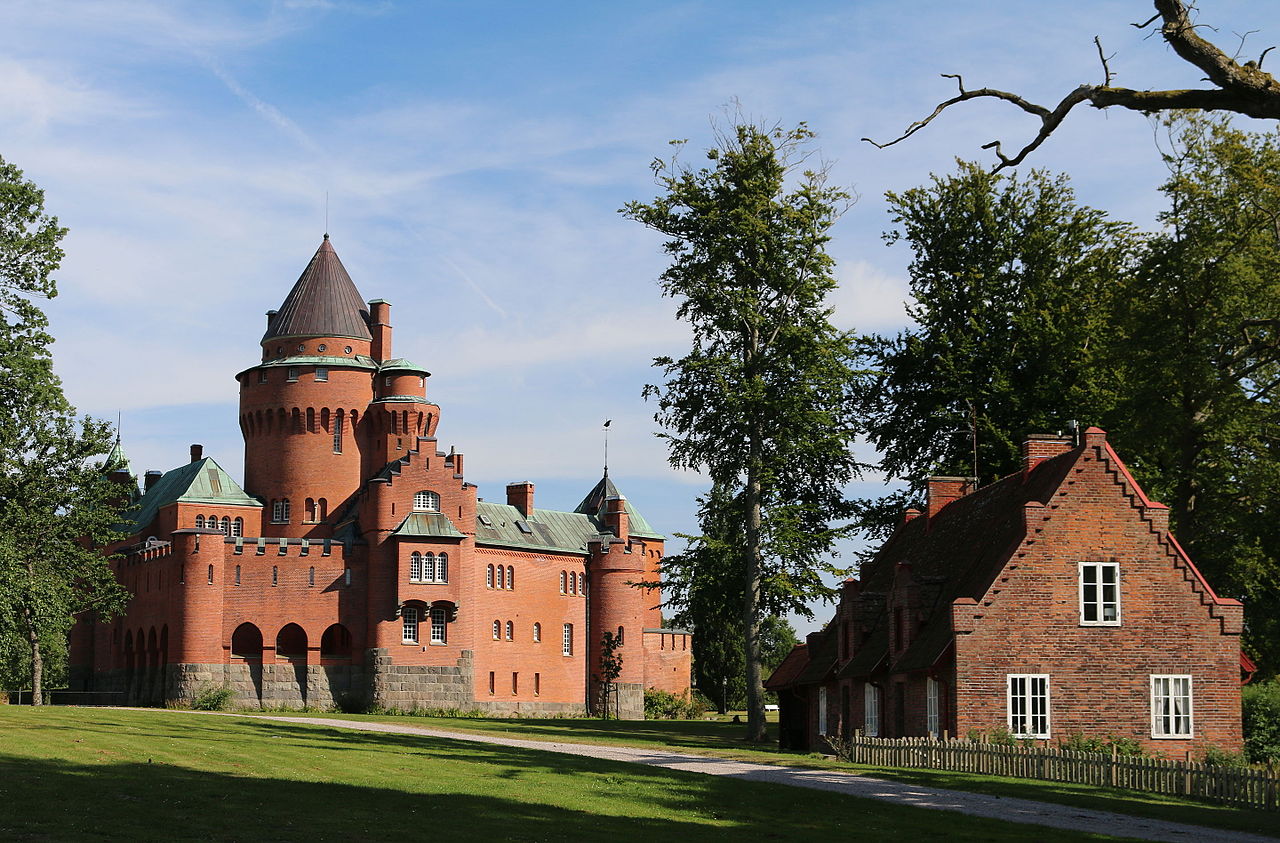
Photo: Jorchr, Wikimedia Commons
Historicism comprises artistic styles that draw their inspiration from recreating historic styles or imitating the work of historic artists and artisans. This is especially common in architecture, where there are many different styles of Revival architecture. Through a combination of different styles or the implementation of new elements, historicism can create completely different aesthetics than former styles. Thus, it offers a great variety of possible designs.
Examples of historicism and revivalism architecture: Trolleholms slott, Klågerups slott, Häckeberga slott, Kulla Gunnarstorps slott, Thorskogs slott, Pålsjö, Stora Sundby, Örenäs slott, Lejondal, Hjularöds slott (pictured), Engsholm, Stjärneborg
Arts and Crafts
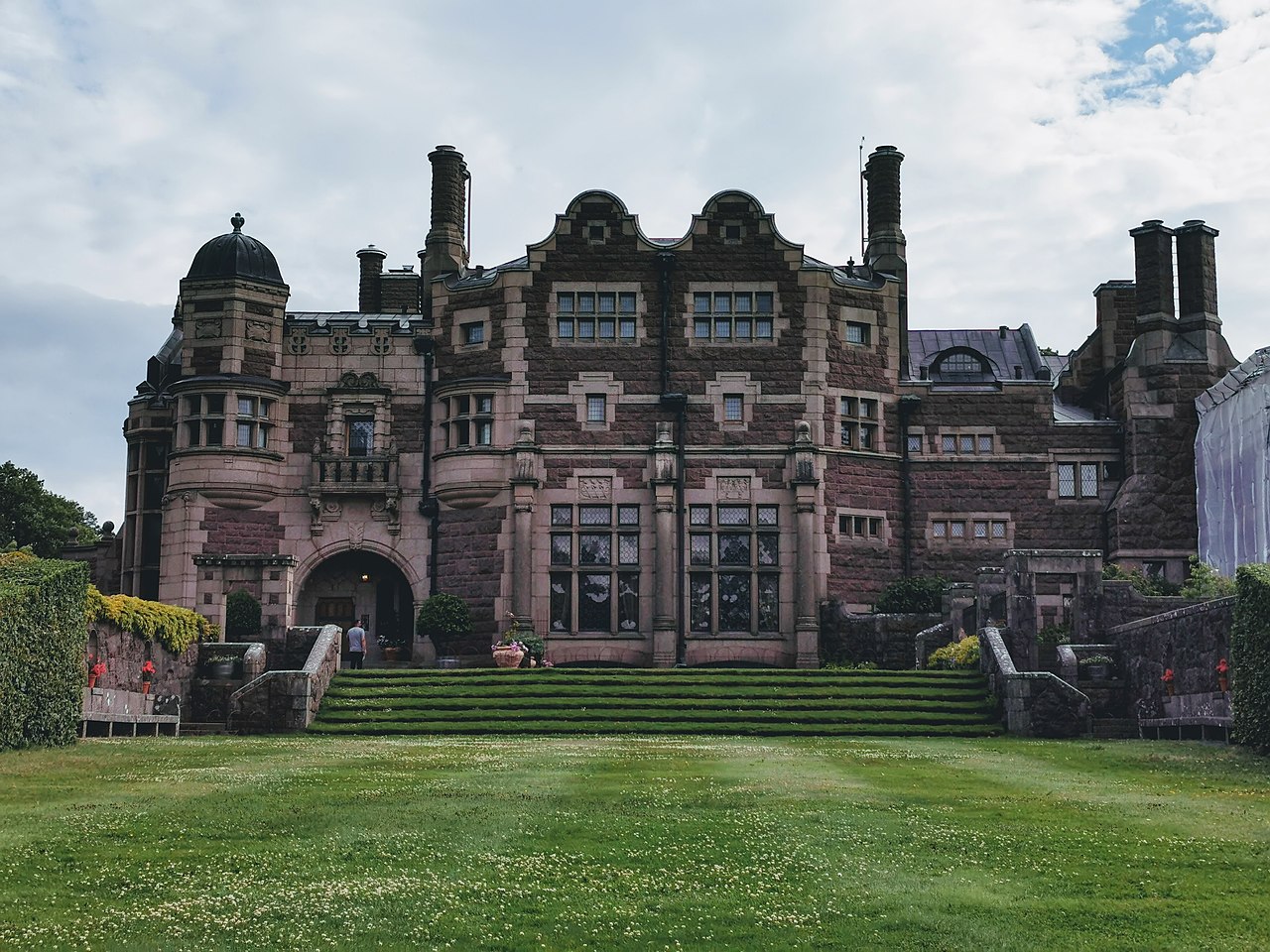
Photo: Netha Hussain, Wikimedia Commons
Arts and Crafts was an influential movement of the late 19th century which attempted to re-establish the skills of craftsmanship threatened by mass production and industrialisation. It came about as a reaction against the eclectic, historical styles and the imitative industrial products that the Industrial Revolution had created and stood for traditional craftsmanship, and often used medieval, romantic, or folk styles of decoration. Arts and Crafts is the root of the Modern Style, the British expression of what later came to be called the Art Nouveau movement, which it strongly influenced. style.
Examples of Arts and Crafts architecture: Tjolöholm (pictured)